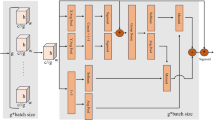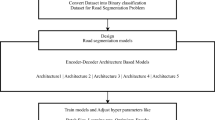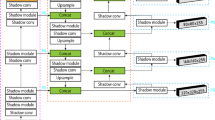Abstract
Most of the color based road detection methods use a lower-center region as a “safe” road reference to construct appearance models for the road. However, its utility critically relies on the pose of vehicles. In case of involving non-road pixels, color models trained by using samples from this region often yield erroneous results. To address this problem, we propose a novel color-based road detection method based on a boundary ratio prior, with which we are able to infer the confidence of a certain image region belonging to the road class. Specifically, the boundary ratio prior is defined as the ratio of the length of the coincident boundary of this region and the image bottom to that of the region boundary itself. The calculation of this prior model is realized by a graph based geodesic distance measure. Moreover, the conventional illumination invariance space is integrated to calculate the distance metric of two neighboring nodes in the graph in order to make our approach robust to shadows. Experiments on multiple datasets demonstrate that the proposed approach is efficient and more robust than the existing methods based on the lower-center region prior.










Similar content being viewed by others
References
Achanta R, Shaji A, Smith K, Lucchi A, Fua P, Susstrunk S (2012) Slic superpixels compared to state-of-the-art superpixel methods. IEEE Trans Pattern Anal Mach Intell 34(11):2274–2282
Alon Y, Ferencz A, Shashua A (2006) Offroad path following using region classification and geometric projection constraints. In: Computer Vision and Pattern Recognition, 2006 I.E. Computer Society Conference on, volume 1, pages 689–696. IEEE
Alvarez JM, Gevers T, Diego F, L’opez AM (2013) Road geometry classification by adaptive shape models. IEEE Trans Intell Transp Syst 14(1):459–468
Alvarez JM, Gevers T, LeCun Y, Lopez AM (2012) Road scene segmentation from a single image. In: Computer Vision–ECCV 2012, pages 376–389. Springer
Alvarez JM, Gevers T, Lopez AM (2010) 3d scene priors for road detection. In: Computer Vision and Pattern Recognition (CVPR), 2010 I.E. Conference on, pages 57–64. IEEE
Alvarez JM, Gevers T, Lopez AM (2013) Evaluating color representations for on-line road detection. In: Computer Vision Workshops (ICCVW), 2013 I.E. International Conference on, pages 594–599. IEEE
Alvarez JM, Gevers T, Lopez AM (2014) Road detection by one-class color classification: Dataset and experiments. arXiv preprint arXiv:1412.3506
Alvarez JM, Lopez AM (2011) IEEE Trans Intell Transp Syst 12(1):184–193
Alvarez JM, Lopez AM, Gevers T, Lumbreras F (2014) Combining priors, appearance, and context for road detection. IEEE Trans Intell Transp Syst 15(3):1168–1178
Alvarez JM, Lumbreras F, Lopez AM, Gevers T (2012) Understanding road scenes using visual cues and GPS information. In: Computer Vision–ECCV 2012. Workshops and Demonstrations, pages 635–638, Springer
Alvarez JM, Salzmann M, Barnes N (2013) Learning appearance models for road detection. In: Intelligent Vehicles Symposium (IV), 2013 IEEE, pages 423–429. IEEE
Dahlkamp H, Kaehler A, Stavens D, Thrun S, Bradski GR (2006) Self-supervised monocular road detection in desert terrain. In: Robotics: science and systems, Philadelphia
Darms M, Komar M, Lueke S (2010) Map based road boundary estimation. In: Intelligent Vehicles Symposium (IV), 2010 IEEE, pages 609–614. IEEE
Finlayson GD, Drew MS, Lu C (2004) Intrinsic images by entropy minimization. In Computer Vision-ECCV 2004, pages 582–595, Springer
Fritsch J, Kuhnl T, Geiger A (2013) A new performance measure and evaluation benchmark for road detection algorithms. In: Intelligent Transportation Systems-(ITSC), 2013 16th International IEEE Conference on, pages 1693–1700. IEEE
Gallup D, Frahm J-M, Pollefeys M (2010) Piecewise planar and non-planar stereo for urban scene reconstruction. In: Computer Vision and Pattern Recognition (CVPR), 2010 I.E. Conference on, pages 1418–1425. IEEE
Guo C, Mita S, McAllester D (2010) Mrf-based road detection with unsupervised learning for autonomous driving in changing environments. In: Intelligent Vehicles Symposium (IV), 2010 IEEE, pages 361–368. IEEE
Guo C, Yamabe T, Mita S (2012) Robust road boundary estimation for intelligent vehicles in challenging scenarios based on a semantic graph. In: Intelligent Vehicles Symposium (IV), 2012 IEEE, pages 37–44. IEEE
He Y, Wang H, Zhang B (2004) Color-based road detection in urban traffic scenes. IEEE Trans Intell Transp Syst 5(4):309–318
He Z, Wu T, Xiao Z, He H (2013) Robust road detection from a single image using road shape prior. In: Image Processing (ICIP), 2013 20th IEEE International Conference on, pages 2757–2761. IEEE
Hillel AB, Lerner R, Levi D, Raz G (2014) Recent progress in road and lane detection: a survey. Mach Vis Appl 25(3):727–745
Johnson DB (1977) Efficient algorithms for shortest paths in sparse networks. JACM 24(1):1–13
Kong H, Audibert J-Y, Ponce J (2010) General road detection from a single image. IEEE Trans Image Process 19(8):2211–2220
Lookingbill A, Rogers J, Lieb D, Curry J, Thrun S (2007) Reverse optical flow for selfsupervised adaptive autonomous robot navigation. Int J Comput Vis 74(3):287–302
Lu K, Li J, An X, He H (2014) A hierarchical approach for road detection. In: Robotics and Automation (ICRA), 2014 I.E. International Conference on, pages 517–522. IEEE
Rotaru C, Graf T, Zhang J (2008) Color image segmentation in hsi space for automotive applications. J Real-Time Image Proc 3(4):311–322
Siogkas GK, Dermatas ES (2013) Randomwalker monocular road detection in adverse conditions using automated spatiotemporal seed selection. IEEE Trans Intell Transp Syst 14(2):527–538
Wang B, Fremont V, Rodrıguez SA (2014) Color-based road detection and its evaluation on the kitti road benchmark. In: Intelligent Vehicles Symposium Proceedings, 2014 IEEE, pages 31–36. IEEE
Wang H, Gong Y, Liu Y, Ren M (2014) Road detection via superpixels and interactive image segmentation. In: Cyber Technology in Automation, Control, and Intelligent Systems (CYBER), 2014 I.E. 4th Annual International Conference on, pages 152–155. IEEE
Wang Y, Bai L, Fairhurst M (2008) Robust road modeling and tracking using condensation. IEEE Trans Intell Transp Syst 9(4):570–579
Yuan J, Tang S, Wang F, Zhang H (2014) A robust road segmentation method based on graph cut with learnable neighboring link weights. In: Intelligent Transportation Systems (ITSC), 2014 I.E. 17th International Conference on, pages 1644–1649. IEEE
Zhang G, Zheng N, Cui C, Yan Y, Yuan Z (2009) An efficient road detection method in noisy urban environment. In: Intelligent Vehicles Symposium, 2009 IEEE, pages 556–561. IEEE
Zhou S, Gong J, Xiong G, Chen H, Iagnemma K (2010) Road detection using support vector machine based on online learning and evaluation. In: Intelligent Vehicles Symposium (IV), 2010 IEEE, pages 256–261. IEEE
Zhou S, Iagnemma K (2010) Self-supervised learning method for unstructured road detection using fuzzy support vector machines. In: Intelligent Robots and Systems (IROS), 2010 IEEE/RSJ International Conference on, pages 1183–1189. IEEE
Author information
Authors and Affiliations
Corresponding author
Rights and permissions
About this article
Cite this article
Wang, H., Ren, M. & Yang, J. Capitalizing on the boundary ratio prior for road detection. Multimed Tools Appl 75, 11999–12019 (2016). https://doi.org/10.1007/s11042-016-3280-y
Received:
Revised:
Accepted:
Published:
Issue Date:
DOI: https://doi.org/10.1007/s11042-016-3280-y




